Cypress spurge: description, planting, care and examples in landscape design
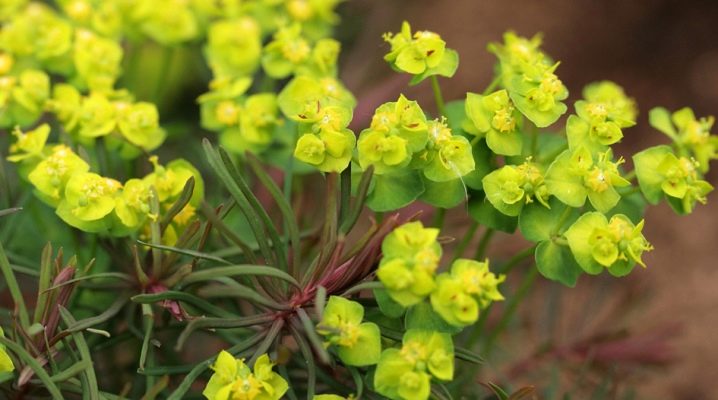
Each summer resident in his garden is in constant captivity of vegetables and fruits. But there is practically no time left for planting and decorating a flower garden. An excellent option for busy gardeners is the cypress euphorbia, a beautiful and unpretentious perennial plant.
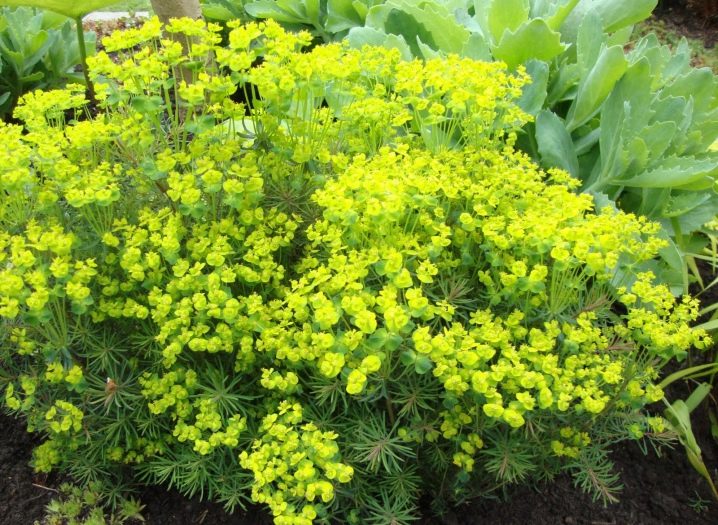
Botanical characteristic
Cypress spurge is a perennial herb. Growth - no more than half a meter. Slender green stems are strewn with many branches with flowering tops. The blooming area is expressed in the shape of a ball, the color of the fruit - from soft lemon to juicy olive. The shrub blooms twice a year - in June and early August. If spring began early, and warming came at the end of April, then in May one can observe blooming spurge. It adapts to any soil in Eurasia. You can meet him along roads, on rocky surfaces and even in garbage dumps.
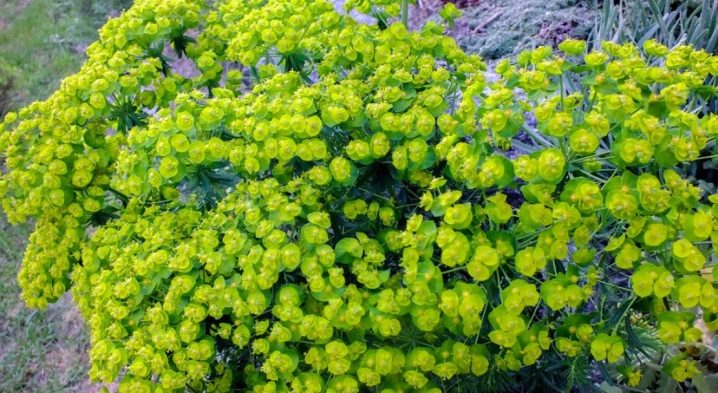
A strong, lush flower can not only modestly decorate a flower bed in front of a fence, but also become an original option in landscape design. Uncomplicated in content, active in growth and original in its appearance. Thanks to these indicators, cypress spurge is in demand both among landscape designers and among amateur gardeners.
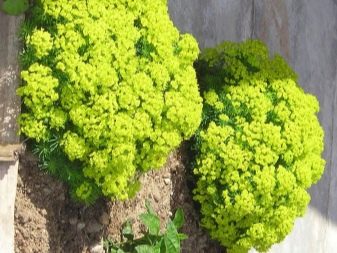
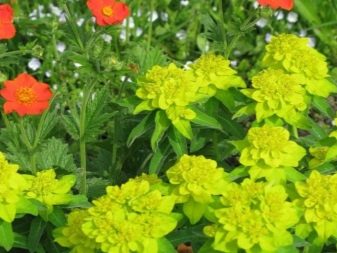
Application in landscape design of cypress milkweed
Euphorbia is a multifaceted plant. More than 1000 species have been identified by botanists. Therefore, its diversity is limitless. It can be a picturesque medium-sized shrub or a herbaceous group. It has various dimensions and color options.
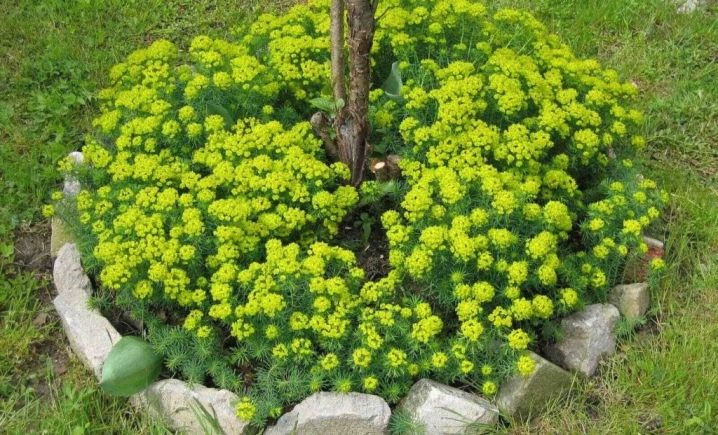
Most often it is planted along garden paths, around a space with flowers. It pleases and delights with its flowering throughout the summer season, therefore organically fills the atmosphere of the garden. Against its noble background, any plant emphasizes its individuality, and the resemblance to a juniper allows a combination with any kind of conifers.
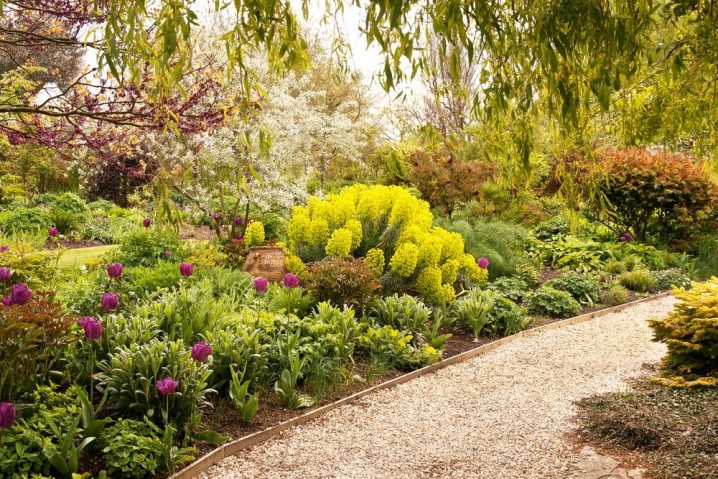
Many gardeners use it as a living frame around a bench, near a gazebo, or cut a certain area with it. They are seated along the paths and along the length of various buildings in the yard.
For settling on a flower bed, in a set of different plants, the optimal view is spherical spurge. Its flowers bloom in the shape of a ball, like a fluffy round living lump. Another feature is the leaves, which change their color every day. Combined with gold-colored shoots, they will delight the owner of the garden and his guests throughout the season. The palette ranges from soft green to milk chocolate. This perennial is an independent person, he does not need to be among his comrades-in-arms, he can grow in splendid isolation and be no less attractive to those around him.
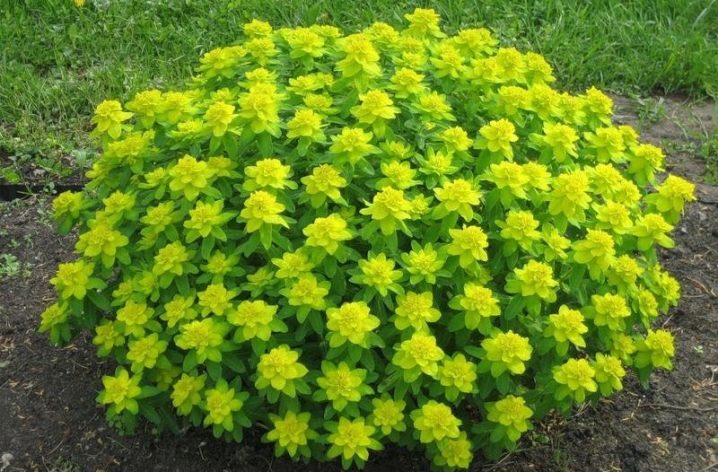
It is also used on an urban scale, decorating parks, squares, recreation areas.
For all its attractiveness, this plant is inherent in assertiveness. From the first day, it dominates the entire vegetation of the garden. Feels like a master, resolutely putting down its roots deeply and for a long time. He "survives" partners who are close to him. With its horizontally creeping roots, it leaves no chance for others. Therefore, special containers or partitions in the ground are recommended for planting it in order to limit unplanned growth. To exterminate him from the place where he entered "illegally" will be a lot of trouble and time.Therefore, it is better to control the process of its growth in time.
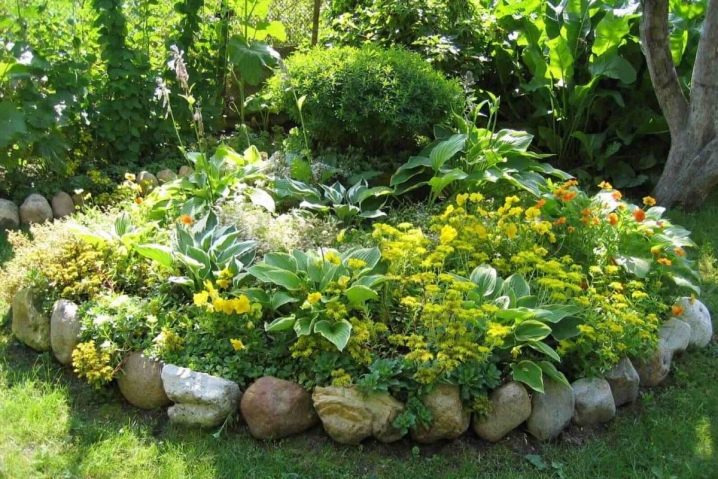
Landing
Cypress spurge is not very demanding in the choice of soil. It can be medium light soil, black soil, crushed stone. Peat or compost can be added if possible. In this case, the landing approach will be more complete. In order for the land to be damp, it is worth minimizing the distance from the reservoir, natural or artificial, as much as possible. Although the spurge is unpretentious, it will be better if you choose a place for planting it where there is more sun than shade. With good lighting, the bush will be more beautiful, and its flowering period will last. In a dark place, spurge can also live, but the stems will be thin and unattractive. And the flowers may not bloom at all. The plant will not be fluffy, thereby losing its decor property. It is advisable to limit the planting area within a framework, not to let it grow where and where it will have to. This will allow you to shape as it grows, the bush will look neat and vibrant.
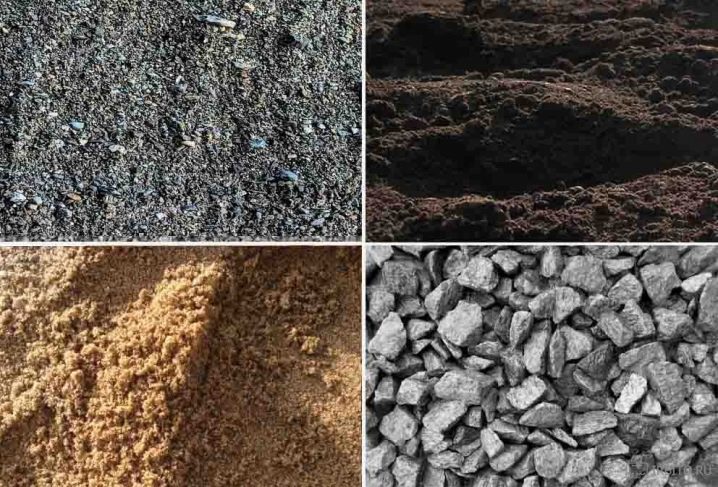
The very fact of planting can be realized by seeds. This is the most straightforward way. They are resistant to dry and frosty ground, so there is no need to insulate the landing site. Having planted seeds in the fall, you can meet the result in the spring. If you prepare the soil and plant the seeds in May, then, after two weeks, the product will make itself felt.

Dividing a bush or root into parts is another option for planting milkweed. In autumn or spring, dig up by the roots and divide into several parts, and then plant in other desired places. The main thing is that each part has a rich root system.
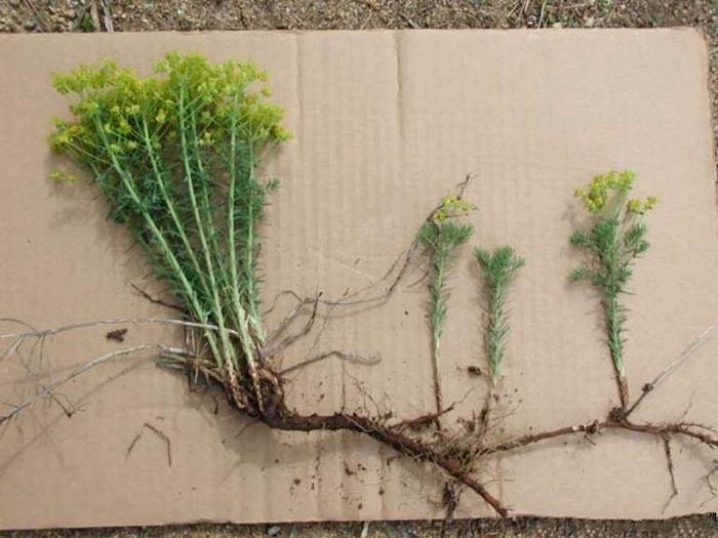
It is recommended to carry out the procedure with gloves: being absorbed into the skin of the hands, milkweed juice can lead to irritation or even an allergic reaction.
Method for cutting cuttings. In this case, cut off the cuttings, rinse them with water and sprinkle the open areas with activated carbon powder. Then plant these cuttings in a pre-prepared mixture of sand, charcoal and black soil. After 20-30 days, as soon as the roots appear, the spurge can be planted in the soil outside. This method is rarely practiced; the priority is still planting with seeds, because they have a high percentage of germination.
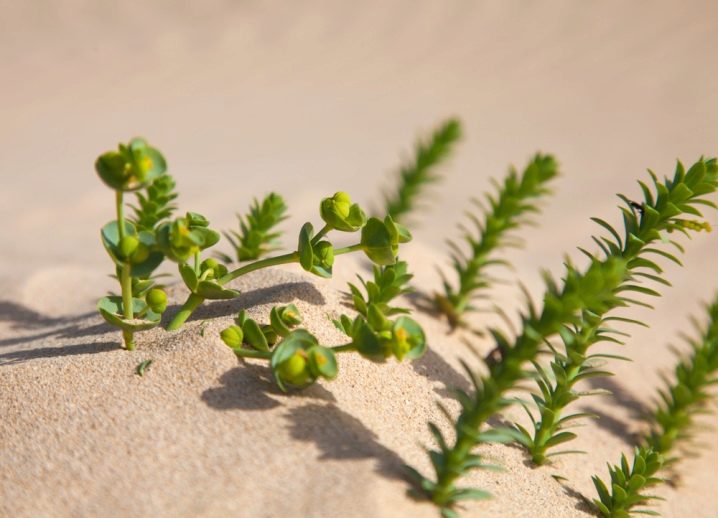
Care
Although the cypress euphorbia is famous for its modesty and indifference to living conditions, it is still not immortal. Without observing the elementary rules of care, he may die.
- Providing watering. Euphorbia does not need frequent watering, it is quite content with natural precipitation. Grows comfortably in places with limited moisture, in areas of severe winter. Watering is necessary only at the sprout stage. Moisten an adult bush only during a period of severe drought. With frequent watering, the shrub can begin to rot, which will lead to its death.
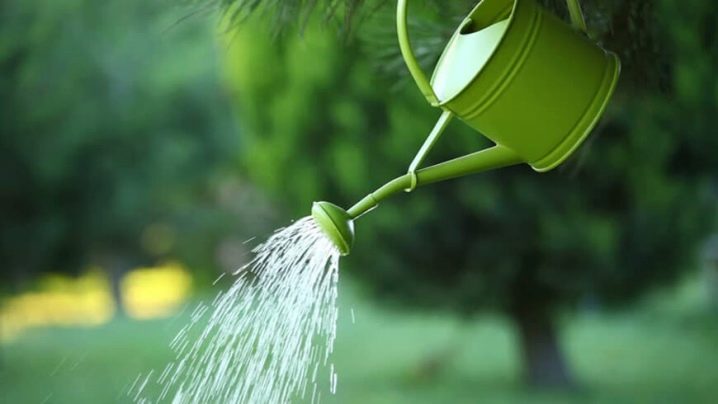
- Euphorbia does not need fertilizers. The recharge that you made at the time of disembarkation is enough. The rest that he needs, he will take himself in the right amount.

- There is no need to resort to various poisons, trying to prevent raids and raids of insects. He will cope with pests and various types of fungus on his own. Euphorbia protects itself, its juice helps in this.
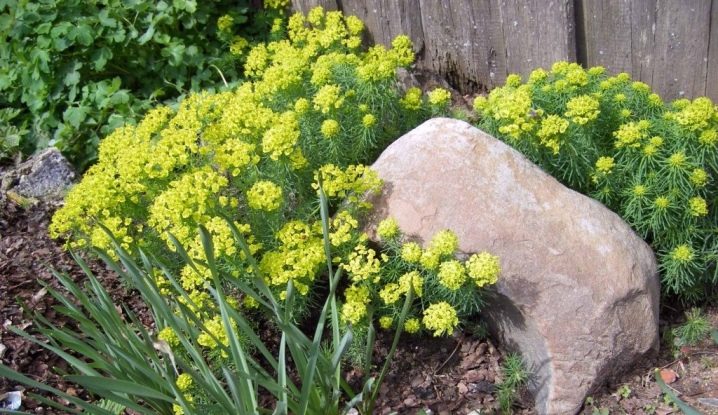
- Oxygen make-up. Periodic loosening of the soil is a prerequisite for care.
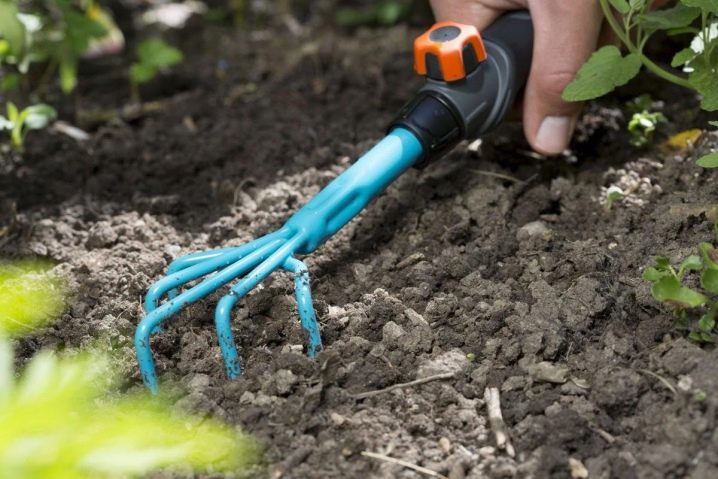
- Air temperature. This plant is indifferent to both heat and coolness. Its fighting spirit allows it to survive even at temperatures down to -15 ° C.

- Regular pruning of the shrub will help maintain a well-groomed appearance. If this is not done, it quickly grows and becomes like an inconspicuous weed grass. Moreover, after pruning, re-flowering will resume. Shrub trimming is a necessary and dangerous process. Milkweed juice contains a poison that can harm the gardener. Therefore, with symptoms such as abdominal pain, gag reflex, increased heart rate, it is recommended to go to the clinic to take measures against poisoning. Eye contact with juice can cause blindness for a while.
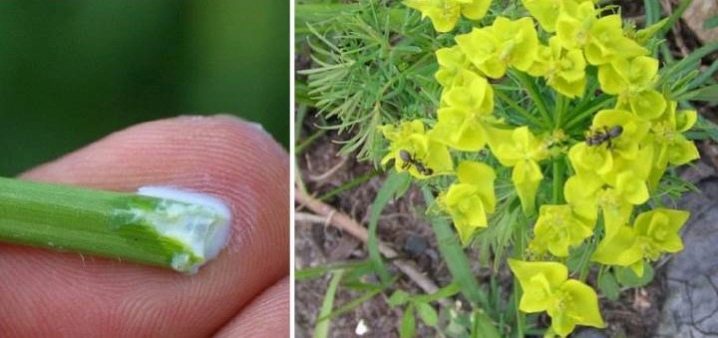
Direct contact with the hands may cause rashes or blisters on the skin, which is also a reason to see a doctor.
Admirers of traditional medicine widely use euphorbia for medicinal purposes. A properly prepared broth or leaves dried for the winter can get rid of exciting diseases.
Here is such an amazing and self-sufficient culture - cypress euphorbia. He is not inherent in all those complex manipulations that are required of people by his other associates. Ideal for beginner gardeners. A minimum of care and maintenance, and as a result - an interesting decorative element on your site.

For more information on cypress milkweed, see the video below.























































The comment was sent successfully.